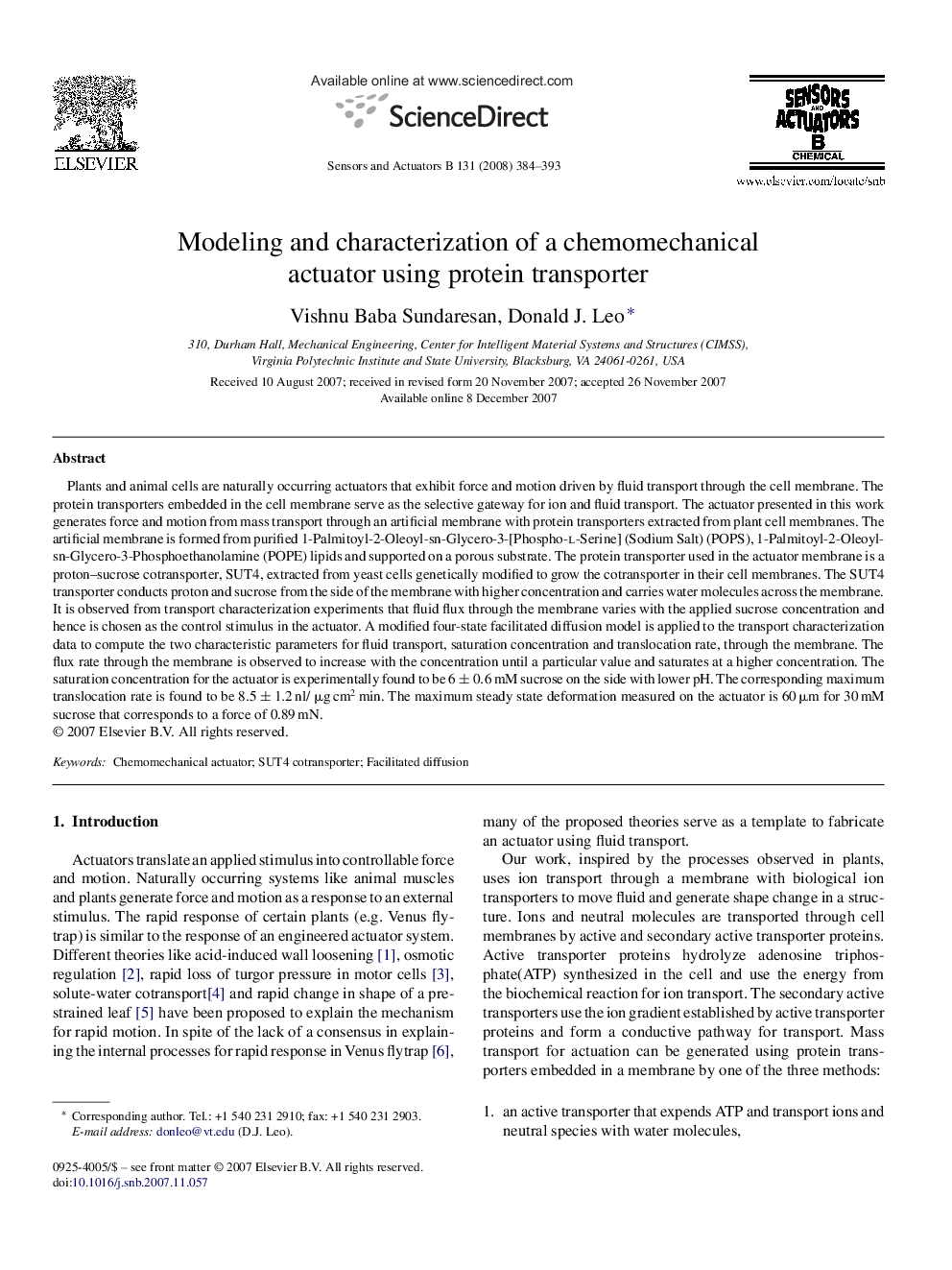| کد مقاله | کد نشریه | سال انتشار | مقاله انگلیسی | نسخه تمام متن |
|---|---|---|---|---|
| 743885 | 894374 | 2008 | 10 صفحه PDF | دانلود رایگان |

Plants and animal cells are naturally occurring actuators that exhibit force and motion driven by fluid transport through the cell membrane. The protein transporters embedded in the cell membrane serve as the selective gateway for ion and fluid transport. The actuator presented in this work generates force and motion from mass transport through an artificial membrane with protein transporters extracted from plant cell membranes. The artificial membrane is formed from purified 1-Palmitoyl-2-Oleoyl-sn-Glycero-3-[Phospho-l-Serine] (Sodium Salt) (POPS), 1-Palmitoyl-2-Oleoyl-sn-Glycero-3-Phosphoethanolamine (POPE) lipids and supported on a porous substrate. The protein transporter used in the actuator membrane is a proton–sucrose cotransporter, SUT4, extracted from yeast cells genetically modified to grow the cotransporter in their cell membranes. The SUT4 transporter conducts proton and sucrose from the side of the membrane with higher concentration and carries water molecules across the membrane. It is observed from transport characterization experiments that fluid flux through the membrane varies with the applied sucrose concentration and hence is chosen as the control stimulus in the actuator. A modified four-state facilitated diffusion model is applied to the transport characterization data to compute the two characteristic parameters for fluid transport, saturation concentration and translocation rate, through the membrane. The flux rate through the membrane is observed to increase with the concentration until a particular value and saturates at a higher concentration. The saturation concentration for the actuator is experimentally found to be 6±0.66±0.6 mM sucrose on the side with lower pH. The corresponding maximum translocation rate is found to be 8.5±1.28.5±1.2 nl/ μg cm2 min. The maximum steady state deformation measured on the actuator is 60 μm for 30 mM sucrose that corresponds to a force of 0.89 mN.
Journal: Sensors and Actuators B: Chemical - Volume 131, Issue 2, 14 May 2008, Pages 384–393